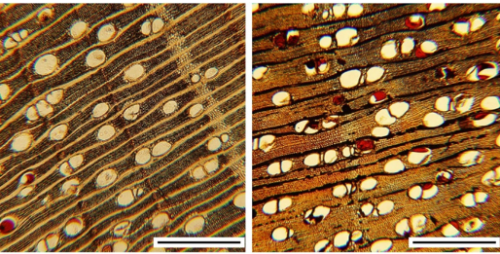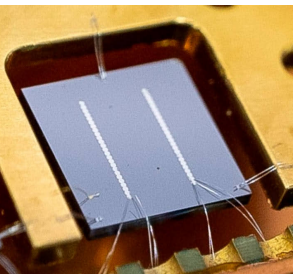2025-04-15 ブリティッシュコロンビア大学(UBC)
<関連情報>
- https://news.ubc.ca/2025/04/ubc-sustainable-electric-guitar/
- https://wfs.swst.org/index.php/wfs/article/view/3214
クロマトグラフィーと高分解能四重極飛行時間型質量分析を用いたマホガニー(swietenia macrophylla)原産材と植林木材の識別 DISTINGUISHING NATIVE AND PLANTATION-GROWN MAHOGANY (SWIETENIA MACROPHYLLA) TIMBER USING CHROMATOGRAPHY AND HIGH-RESOLUTION QUADRUPOLE TIME-OF-FLIGHT MASS SPECTROMETRY
Joseph Doh Wook Kim ,Pamela Brunswick,Dayue Shang,Philip D. Evans
Wood and Fiber Science Published:2023-08-16

Abstract
Plantation-grown mahogany (Swietenia macrophylla) from Fiji has been preferred as a sus- tainable wood source for the craftingof electric guitars because its trade is not restricted by Convention on International Trade in Endangered Species of Wild Fauna andFlora (CITES), unlike S. macrophylla sourced from native forests. Ability to differentiate between the two wood types would deter sale of illegally harvested native-grown S. macrophylla to luthiers and other artisans. The chemical composition of wood is influenced bycambial age and geographical factors, and there are chemical differences between S. macrophylla grown in different regions. Thisstudy tested the ability of high-resolution mass spectrometry to chemotypically dif- ferentiate plantation-grown Fijian S. macrophylla from the same wood species obtained from native forests. Multiple heartwood specimens of both wood types were extracted and chromatographically profiled using gas and liquid chromatography tandem high-resolution quadrupole time-of-flight massspectrometry (GC/QToF, LC/QToF). Visual comparison of mass spectral ions, together with modern analytical data-mining techniques,were employed to screen the results. Principal component analysis scatter plots with 95% confidence ellipses showed unambiguousseparation of the two wood types by GC/LC/QToF. We conclude that screening of heartwood extractives using high-resolution massspectrometry offers an effective way of identifying and sepa- rating plantation-grown Fijian S. macrophylla from wood grown in native forests.



